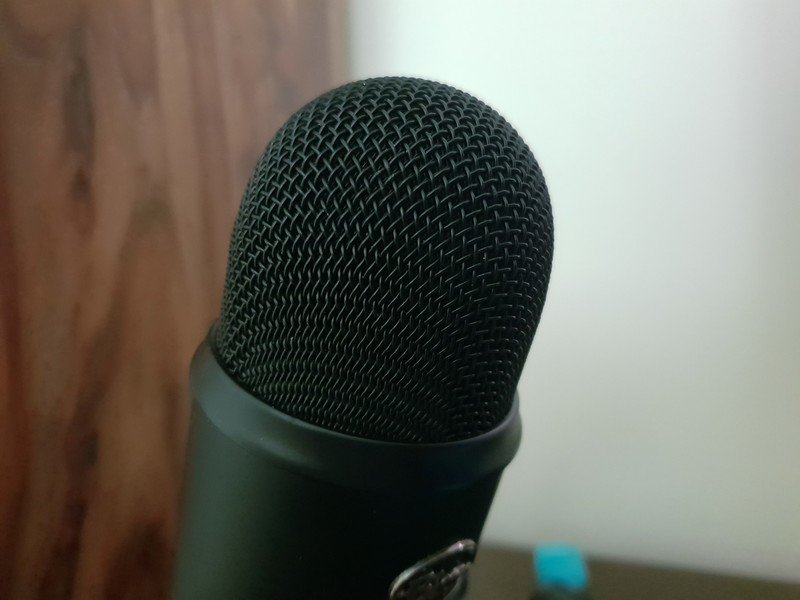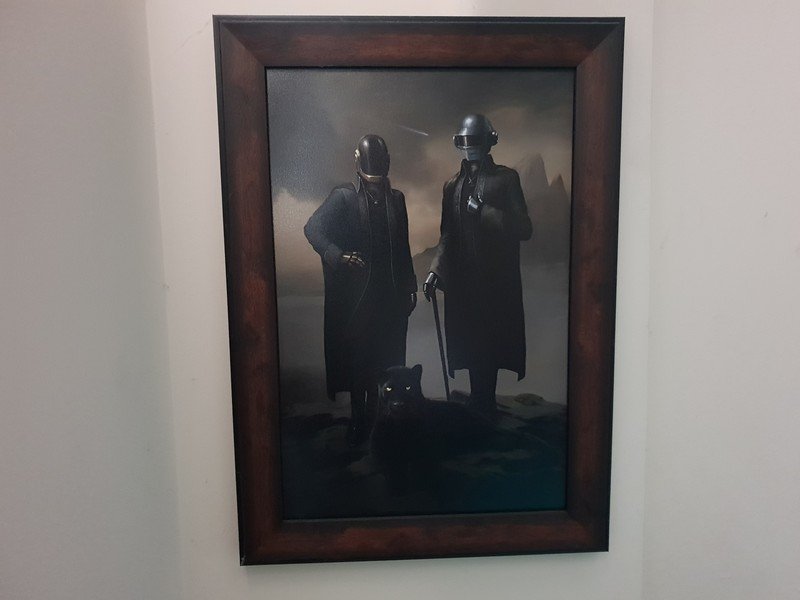Samsung Galaxy S9+ vs. OnePlus 5T: Here's what the extra $300 gets you

With the Galaxy S9 series, Samsung isn't reinventing the wheel: the core design aesthetic is the same as last year, but there are a few key upgrades, particularly in the camera department. The pricing hasn't changed all that much either, with the unlocked Galaxy S9+ retailing for $839, a mere $15 more than what the Galaxy S8+ debuted at last year.
If you don't want to shell out over $800 on a phone, there are plenty of alternatives available, and the OnePlus 5T is at the top of that list. Available for $499, the OnePlus 5T offers top-of-the-line specs with great build quality and a software experience that's equatable to the Pixels. So is the Galaxy S9+ worth the $300 premium over the 5T? Let's find out.
What's the same

Like last year, Samsung is the first to roll out a phone with Qualcomm's latest platform, the Snapdragon 845. The chipset is built on the 10nm node but comes with a slew of improvements that include up to a 20% uptick in CPU performance and a huge 30% boost in the GPU department. The SoC also comes with an LTE modem that goes up to 1.2Gbps, and the new Hexagon 685 DSP leverages artificial intelligence.
The U.S. variant of the Galaxy S9+ is powered by the Snapdragon 845, whereas international models receive the Exynos 9810 version. While the Exynos variant offers marginally better battery life, there isn't any noticeable performance difference between the two models.
The OnePlus 5T is no slouch either, with the phone powered by the Snapdragon 835. It may not be the latest chipset anymore, but it is still one of the fastest available today, and OnePlus' optimizations give it an added boost.
| Category | Samsung Galaxy S9+ | OnePlus 5T |
|---|---|---|
| Operating system | Android 8.0 Oreo Samsung Experience 9.0 | Android 8.0 Oreo OxygenOS 5.0.4 |
| Display | 6.2-inch Super AMOLED, 2960x1440 (18.5:9) | 6-inch Optic AMOLED, 2160x1080 (18:9) |
| Processor | Qualcomm Snapdragon 845 or 10nm 64-bit Samsung Exynos 9810 | Qualcomm Snapdragon 835 octa-core Adreno 540 GPU |
| Storage | 64GB/256GB microSD up to 400GB | 64/128GB (UFS 2.1) |
| RAM | 6GB/6GB | 6/8GB LPDDR4X |
| Rear camera 1 | 12MP Dual Pixel, OIS, f/1.5 or f/2.4 | 16MP, 1.12μm, f/1.7 Dual LED flash |
| Rear camera 2 | 12MP, f/2.4 | 20MP, 1μm, f/1.7 |
| Front camera | 8MP, f/1.7, auto focus | 16MP, 1μm, f/2.0 |
| Battery | 3500mAh | 3300mAh |
| Charging | USB-C Fast Wireless Charging | USB-C Dash Charge |
| Water resistance | Yes (IP68 certified) | No |
| Security | Fingerprint sensor Iris scanning Face unlock | One-touch fingerprint sensor Face Unlock |
| Connectivity | Wi-Fi 802.11ac MIMO, 1.2 Gbps (Cat-18) LTE, Bluetooth 5.0 LE ANT+, NFC, GPS, Glonass | 802.11ac Wi-Fi, 2x2 MIMO, Bluetooth 5.0, aptX HD USB-C (2.0), NFC GPS, GLONASS, BeiDou, Galileo |
| Network | LTE Band 1/2/3/4/5/7/8/12/17/18/19/20/25/26/28/29/30/66 3xCA, 256QAM, DL Cat 12, UL Cat 13 | Row 13 - Cell 2 |
| Dimensions | 158.1 x 73.8 x 8.5 mm 189 g | 156.1 x 75 x 7.3 mm 162 g |
| Colors | Midnight Black, Lilac Purple, Coral Blue | Midnight Black, Lava Red, Sandstone White |
| Price | $839 | $499 |
The OnePlus 5T launched with Nougat out of the box, but the phone picked up the Oreo update at the start of the year. Thankfully, the Galaxy S9+ comes with Android 8.0 Oreo out of the box. Rounding out the basics, both phones come with 3.5mm jacks.
The Galaxy S9+ has a marginally larger 3500mAh battery — 200mAh more than what you get on the OnePlus 5T — but the battery life is roughly the same on both phones. You shouldn't have any issues getting a day's worth of usage with each phone.
Get the latest news from Android Central, your trusted companion in the world of Android
Both the OnePlus 5T and the Galaxy S9+ also come with a variety of storage and color options. The Galaxy S9+ is available in three colors options at launch — Midnight Black, Coral Blue, and Lilac Purple — and OnePlus has introduced several limited edition models of the OnePlus 5T that include Sandstone White and Lava Red.
What the Galaxy S9+ does better
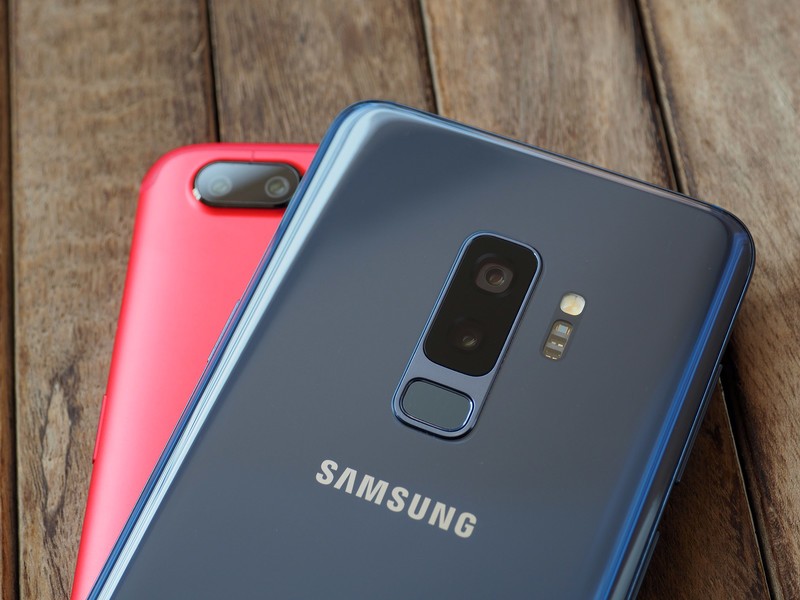
The OnePlus 5T has top-notch build quality, but the design itself isn't all that exciting. That's not the case with the Galaxy S9+ — Samsung's Infinity Display design aesthetic is evocative, and the way the light reflects off the glass back is striking. The Coral Blue color option, in particular, looks stunning, and the phone has thinner bezels when compared to the OnePlus 5T.
The dual curved panel also adds to that immersive experience, and for its part, Samsung has done a much better job eliminating accidental touches when using the phone one-handed. The Galaxy S9+ is a full 16g heavier over its predecessor while offering the same 3500mAh battery, and the added weight works in the device's favor. The OnePlus 5T comes in at 162g, and the weight distribution makes it top-heavy, but the Galaxy S9+ feels reassuringly solid.


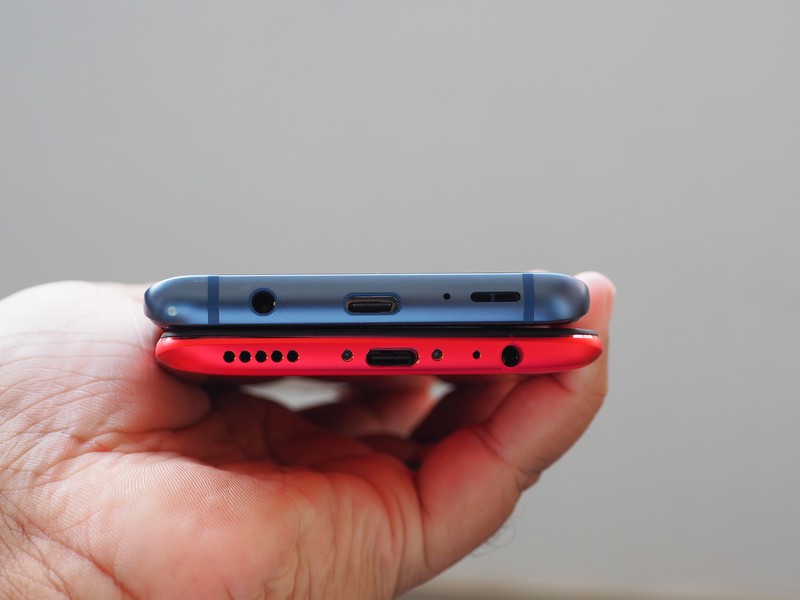


Then there's the 6.2-inch Super AMOLED display itself, which is the one of the best panels on a phone today. Samsung has been leading the display industry for a few years now, and its best panels rightfully end up on its own flagships. The panel on the Galaxy S9+ is wonderful, offering saturated colors, excellent contrast levels, and great viewing angles. The panel is brighter than the Galaxy S8+, so you'll have no issues with sunlight readability. I've been testing the phone in India's harsh sunlight, and Samsung's claims hold up.
The Galaxy S9+ offers a class-leading display paired with an outstanding camera.
Samsung also did a much better job when it comes to the audio experience, with the Galaxy S9+ featuring stereo speakers tuned by AKG. The secondary speaker is tucked into the earpiece, and the overall sound that comes out of the dual speakers is noticeably louder and clearer than last year.
The camera is the marquee feature on the Galaxy S9+, with Samsung offering a module with adjustable aperture — allowing it to switch from f/1.5 to f/2.4. There's a new 960fps super slow-motion feature as well, which just looks cool. The Galaxy S9+ also gets a secondary 12MP camera that acts as a telephoto lens, enabling 2x lossless zoom.
Galaxy S9+ on the left, OnePlus 5T on the right.
The OnePlus 5T holds its own in daylight scenarios, but it lags behind the Galaxy S9+ in low-light or artificial lighting. The S9+ just pulls ahead in terms of overall detail and dynamic range.
Then there are the extra features: the Galaxy S9+ offers wireless charging, Samsung Pay, and IP68 dust and water resistance. Wireless charging is a niche feature, but water resistance is a must-have in this segment. There are two features I miss whenever I switch to a non-Samsung phone — that gorgeous AMOLED panel and Samsung Pay. The mobile payments service has near-ubiquitous acceptance thanks to NFC as well as MST, and it's easier and more secure to use.
The Galaxy S9+ also comes with a new "intelligent scan" feature that uses a combination of facial recognition and iris scanning to authenticate, and while the OnePlus 5T also has a face unlock feature, it isn't as secure as what Samsung is offering. I wasn't a fan of the Galaxy Note 8's iris scanning, but Intelligent Scan is significantly faster.
What the OnePlus 5T does better
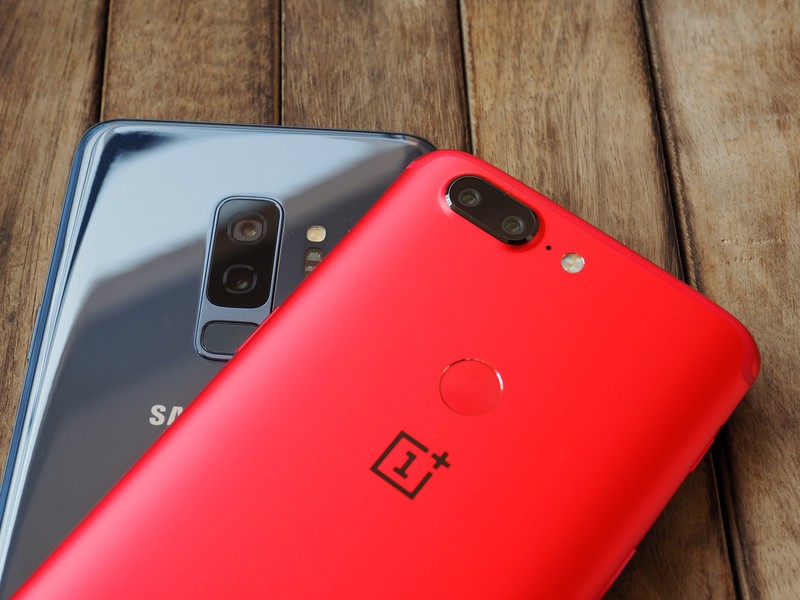
The OnePlus 5T is one of the fastest phones in the market today, and the OxygenOS optimizations carried out by OnePlus make it fly. It is just as fast and fluid to use as a Pixel 2, and OnePlus tailored the software experience to perfection. The clutter-free user interface is one of the best available on Android, and OnePlus has added enough differentiation in the form of gestures and subtle tweaks to make it stand out.
OxygenOS offers one of the best software experiences available on Android today.
OnePlus also got much better at updates over the course of the last 12 months, with the company consistently rolling out security updates and adding new features to the device every few weeks. The OnePlus 5T received the Android 8.0 Oreo update at the start of the year, earlier than the Galaxy S8.
With the Galaxy S9+ still using the same Adaptive Fast Charge as two years ago (which is limited to Quick Charge 2.0 speeds), the OnePlus 5T has the distinct edge when it comes to charging thanks to Dash Charge. The fast charging standard offloads the circuitry to the wall charger, which means the device itself doesn't heat up while charging. Then there's the fact that you can charge up to 60% in just 30 minutes.
If you're looking to top up your phone's battery in the middle of the day, Dash Charge is one of the best options around.
Finally, the OnePlus 5T has better placement for the fingerprint scanner. Samsung moved the scanner underneath the camera module — making it easier to access — but it's still not at the natural resting position of your finger. You'll end up smudging the camera module more often than not when trying to unlock the device. That isn't an issue on the OnePlus 5T, as the sensor is located in the top-third
Which should you buy? Galaxy S9+
As good as the OnePlus 5T is — particularly in the software department — it misses out on a few key features, like water resistance. That should be a table stakes feature if you're spending $500 on a phone in 2018, and while the situation may change with the OnePlus 6, the feature is a sore omission on the OnePlus 5T.
Overall, the Galaxy S9+ is a much more enticing option. For $330 more, you're getting a phone with a much better camera, gorgeous design, iris scanning, IP68 dust and water resistance, wireless charging, and Samsung Pay. Samsung clearly understands what its fans want from a flagship, and the Galaxy S9+ absolutely nails the basics while delivering premium features that make it stand out.

Harish Jonnalagadda is Android Central's Senior Editor overseeing mobile coverage. In his current role, he leads the site's coverage of Chinese phone brands, networking products, and AV gear. He has been testing phones for over a decade, and has extensive experience in mobile hardware and the global semiconductor industry. Contact him on Twitter at @chunkynerd.






